Infectious Diarrhea Risks as a Public Health Emergency in Floods; a Systematic Review and Meta-Analysis
- PMID: 38962364
- PMCID: PMC11221827
- DOI: 10.22037/aaem.v12i1.2284
Infectious Diarrhea Risks as a Public Health Emergency in Floods; a Systematic Review and Meta-Analysis
Abstract
Introduction: Infectious diarrhea, a significant global health challenge, is exacerbated by flooding, a consequence of climate change and environmental disruption. This comprehensive study aims to quantify the association between flooding events and the incidence of infectious diarrhea, considering diverse demographic, environmental, and pathogen-specific factors.
Methods: In this systematic review and meta-analysis, adhering to PROSPERO protocol (CRD42024498899), we evaluated observational studies from January 2000 to December 2023. The analysis incorporated global data from PubMed, Scopus, Embase, Web of Science, and ProQuest, focusing on the relative risk (RR) of diarrhea post-flooding. The study encompassed diverse variables like age, sex, pathogen type, environmental context, and statistical modeling approaches.
Results: The meta-analysis, involving 42 high-quality studies, revealed a substantial increase (RR = 1.40, 95% CI [1.29-1.52]) in the incidence of diarrhea following floods. Notably, bacterial and parasitic diarrheas demonstrated higher RRs (1.82 and 1.35, respectively) compared to viral etiologies (RR = 1.15). A significant sex disparity was observed, with women exhibiting a higher susceptibility (RR = 1.55) than men (RR = 1.35). Adults (over 15 years) faced a greater risk than younger individuals, highlighting age-dependent vulnerability.
Conclusion: This extensive analysis confirms a significant correlation between flood events and increased infectious diarrhea risk, varying across pathogens and demographic groups. The findings highlight an urgent need for tailored public health interventions in flood-prone areas, focusing on enhanced sanitation, disease surveillance, and targeted education to mitigate this elevated risk. Our study underscores the critical importance of integrating flood-related health risks into global public health planning and climate change adaptation strategies.
Keywords: Climate change; Diarrhea; Disease transmission; Floods; Public health; Risk factor; infectious.
Conflict of interest statement
The authors declare that they have no competing interests
Figures

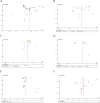
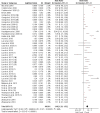
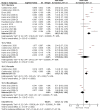


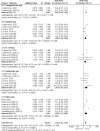
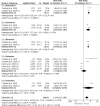


Similar articles
-
Infectious disease outbreaks in the wake of natural flood disasters: global patterns and local implications.Infez Med. 2024 Dec 1;32(4):451-462. doi: 10.53854/liim-3204-4. eCollection 2024. Infez Med. 2024. PMID: 39660153 Free PMC article. Review.
-
Pathogen-Specific Impacts of the 2011-2012 La Niña-Associated Floods on Enteric Infections in the MAL-ED Peru Cohort: A Comparative Interrupted Time Series Analysis.Int J Environ Res Public Health. 2020 Jan 12;17(2):487. doi: 10.3390/ijerph17020487. Int J Environ Res Public Health. 2020. PMID: 31940920 Free PMC article.
-
Influence of sanitation facilities on diarrhea prevalence among children aged below 5 years in flood-prone areas of Bangladesh: a multilevel analysis.Environ Sci Pollut Res Int. 2023 Sep;30(43):97925-97935. doi: 10.1007/s11356-023-29373-0. Epub 2023 Aug 21. Environ Sci Pollut Res Int. 2023. PMID: 37603245 Free PMC article.
-
Quantitative analysis of burden of infectious diarrhea associated with floods in northwest of anhui province, china: a mixed method evaluation.PLoS One. 2013 Jun 6;8(6):e65112. doi: 10.1371/journal.pone.0065112. Print 2013. PLoS One. 2013. PMID: 23762291 Free PMC article.
-
Local weather, flooding history and childhood diarrhoea caused by the parasite Cryptosporidium spp.: A systematic review and meta-analysis.Sci Total Environ. 2019 Jul 15;674:300-306. doi: 10.1016/j.scitotenv.2019.02.365. Epub 2019 Mar 28. Sci Total Environ. 2019. PMID: 31004904
Cited by
-
A Glance at Archives of Academic Emergency Medicine Journal in 2024.Arch Acad Emerg Med. 2024 Nov 19;13(1):e0. doi: 10.22037/aaem.v13i1.2571. eCollection 2025. Arch Acad Emerg Med. 2024. PMID: 40487906 Free PMC article. No abstract available.
-
Impact of Climate Variability on Foodborne Diarrheal Disease: Systematic Review and Meta-Analysis.Public Health Rev. 2025 Feb 19;46:1607859. doi: 10.3389/phrs.2025.1607859. eCollection 2025. Public Health Rev. 2025. PMID: 40047003 Free PMC article.
-
A retrospective study to understand the impact of flooding on natural selection and physical growth dynamics.Sci Rep. 2025 Aug 22;15(1):30941. doi: 10.1038/s41598-025-09451-8. Sci Rep. 2025. PMID: 40846844 Free PMC article.
References
-
- Angmor GDM. Climate Change Flooding And Diseases In Sub Sahara Africa: Trends And Adaptions Strategies (A Review) Korean J Physiol Pharmacol. 2024;28(1):8–21.
-
- Qian W, Lin X, Zhu Y, Xu Y, Fu J. Climatic regime shift and decadal anomalous events in China. Climatic Change. 2007;84:167–89.
-
- Montgomery R. The Bangladesh floods of 1984 in historical context. Disasters. 1985;9(3):163–72.
-
- Tang CS-k. Trajectory of traumatic stress symptoms in the aftermath of extreme natural disaster: A study of adult Thai survivors of the 2004 Southeast Asian earthquake and tsunami. J Nerv Ment Dis. 2007;195(1):54–9. - PubMed
Publication types
LinkOut - more resources
Full Text Sources
